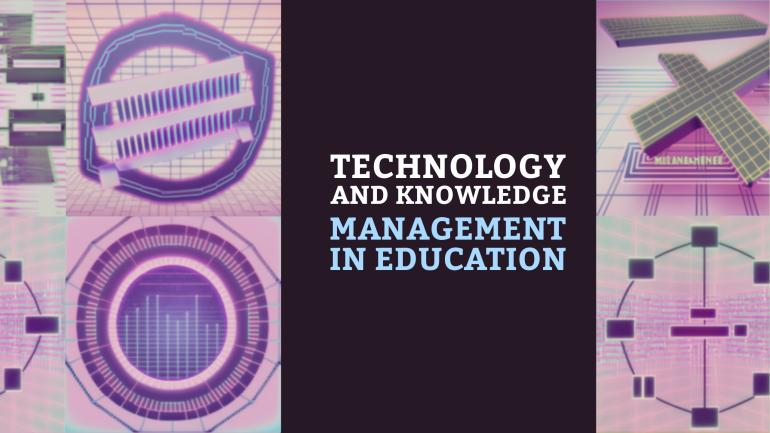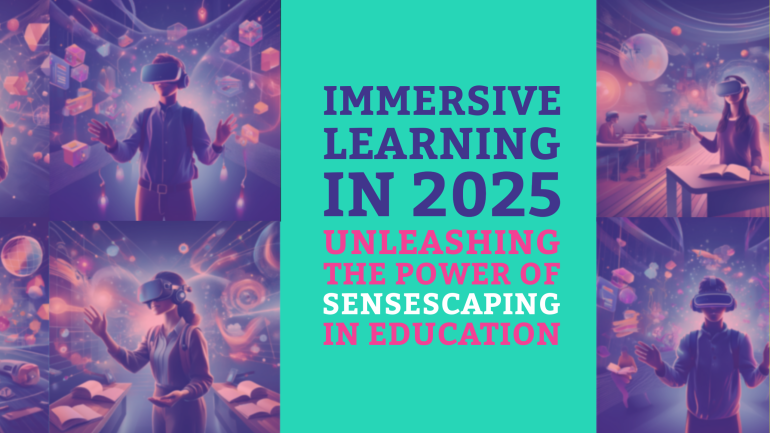Table of Contents
TL;DR: Empowering Education: Integrating Technology with Knowledge Management
- Integration of technology: Integrating technology in education enhances learning experiences, making it interactive and engaging.
- Knowledge management tools: Using knowledge management tools helps in organizing information, sharing resources, and facilitating collaboration among educators and students.
- Data-driven decision-making: Technology provides data that can be analyzed to make informed decisions on curriculum improvements and student progress.
- Lifelong learning: Technology in education fosters a culture of lifelong learning, enabling continuous professional development for educators and skill enhancement for students.
- Global reach: Technology bridges geographical gaps, making education accessible to a wider audience, promoting global collaboration and cultural exchange.
Knowledge is power, especially in education. In today’s digital age, the integration of technology and knowledge management is revolutionizing the way educators organize, analyze, and utilize information. This powerful combination not only enhances the learning experience for students but also provides educators with valuable insights to improve teaching methods and student outcomes.
Historical Development of Educational Technology
While the integration of technology in education may seem like a modern phenomenon, its roots can be traced back to as early as the invention of the printing press in the 15th century. The historical development of educational technology is a captivating journey that has evolved alongside advancements in communication, transportation, and industry.
Evolutions in Teaching Methods and Learning Tools
Historical records show that the evolution of teaching methods and learning tools has been intricate and fascinating. From the early use of chalkboards and textbooks to the introduction of audio-visual materials in the early 20th century, educators have continuously sought innovative ways to engage students and enhance learning experiences. The advent of computers in the 1970s revolutionized education, paving the way for interactive learning software and online resources that have become integral to modern-day classrooms.
The Emergence of Knowledge Management in Education
Any discussion on the historical development of educational technology would be incomplete without exploring the emergence of knowledge management in education. In recent decades, educational institutions have recognized the value of capturing, storing, and sharing knowledge to facilitate collaboration and enhance decision-making processes. Knowledge management systems allow educators to access critical information and resources, promote efficiency in administrative tasks, and improve overall learning outcomes for students.
It is important for educators and stakeholders in the education sector to understand the power of knowledge management in driving innovation and continuous improvement in teaching and learning practices. By effectively implementing knowledge management strategies, educational institutions can optimize resource utilization, foster creativity and collaboration among faculty members, and ultimately, empower students with the necessary skills and knowledge to succeed in an increasingly digitally-driven world.
Learning Management Systems (LMS)
Features and Functions of LMS
Any educational institution looking to streamline their learning processes should consider implementing a Learning Management System (LMS). An LMS is a software application designed to deliver, manage, and track educational courses and training programs. Some key features of LMS include content management, assessment tools, collaboration capabilities, and reporting functionalities. With an LMS, educators can create and organize learning materials, track student progress, and facilitate communication between students and instructors.
Integrating LMS in Classroom and Distance Education
Education environments, both in traditional classrooms and distance learning settings, can benefit greatly from the integration of LMS. By incorporating an LMS into the curriculum, educators can provide a centralized platform for course materials, assignments, and discussions. Students can access resources at their convenience, participate in online discussions, and submit assignments electronically. This seamless integration enhances communication, collaboration, and engagement among students and instructors, paving the way for a more interactive and efficient learning experience.
When integrating LMS in both classroom and distance education, instructors should provide comprehensive training sessions to ensure seamless navigation and utilization of the platform. Efforts must be made to optimize the LMS according to the specific needs and goals of the educational institution, fostering a conducive learning environment for all stakeholders involved.
Knowledge Management Strategies in Education
Codification and Personalization Approaches
Approaches to knowledge management in education often revolve around two main strategies: codification and personalization. Codification involves the documentation and organization of knowledge in a systematic manner, making it easily accessible to members of an educational institution. On the other hand, personalization focuses on the sharing of tacit knowledge through personal interactions and experiences among individuals.
Communities of Practice and Collaborative Learning
To foster knowledge sharing and collaboration, many educational institutions are leveraging communities of practice and collaborative learning environments. These platforms bring together individuals with similar interests or goals to share best practices, solve problems, and innovate together. By promoting a sense of belonging and shared identity, communities of practice encourage a culture of continuous learning and improvement within the institution.
Knowledge management strategies play a crucial role in enhancing the quality of education and improving overall institutional performance. By implementing a mix of codification and personalization approaches, educational institutions can effectively capture, store, and disseminate knowledge, ensuring that valuable insights are not lost amidst transitions or turnover. Communities of practice and collaborative learning further facilitate the exchange of ideas and expertise, fostering a dynamic learning environment that empowers both students and educators.
Technology Tools for Knowledge Management in Education
Database Systems and Information Retrieval
Not only has technology revolutionized the way we access and manage information, but it has also transformed the field of education. Retrieval of information plays a crucial role in knowledge management in education. Database systems provide a structured way to store and organize large amounts of data, making it easier for educators to retrieve the information they need quickly and efficiently.
Cloud-Based Platforms and Storage Solutions
Knowledge management in education has been greatly enhanced by the advent of cloud-based platforms and storage solutions. Educators can now store and access educational resources, lesson plans, and student data from any location with an internet connection. For instance, platforms like Google Drive and Microsoft OneDrive offer collaborative features that allow multiple users to work on the same documents simultaneously, promoting teamwork and knowledge sharing.
Data Analytics in Education
For educators, data analytics provides invaluable insights into student performance, learning patterns, and areas for improvement. By analyzing data collected from assessments, attendance records, and other sources, educators can identify trends and tailor their teaching methods to better meet their students’ needs.
Educational Software and Interactive Learning
Education today is not just about textbooks and lectures; educational software and interactive learning tools have revolutionized the way students engage with course material. These Software tools provide a personalized learning experience, allowing students to learn at their own pace and cater to their unique learning styles. They also offer interactive exercises, simulations, and multimedia content that make learning more engaging and effective.
Challenges and Opportunities
Bridging the Digital Divide
For many educational institutions, one of the primary challenges is bridging the digital divide to ensure equitable access to technology and knowledge resources. This divide encompasses not only access to devices and the internet but also the digital skills necessary to navigate technology effectively. Addressing this gap requires collaborative efforts between governments, organizations, and communities to provide infrastructure, training, and support to underserved populations.
Ensuring Data Security and Privacy
On the front of data security and privacy, educators and administrators face the crucial task of safeguarding sensitive information in an increasingly digitized landscape. Ensuring that student and staff data is protected from cyber threats and that privacy regulations are adhered to are paramount responsibilities. Implementing robust data encryption, regular security audits, and comprehensive privacy policies are crucial steps in maintaining trust and compliance.
For educational institutions, establishing a secure data management system involves not only technological measures but also a comprehensive understanding of legal implications and ethical considerations. Compliance with regulations like the Family Educational Rights and Privacy Act (FERPA) and the Children’s Online Privacy Protection Act (COPPA) is vital to prevent data breaches and protect sensitive information.
Managing Intellectual Property Rights
Another facet of technology and knowledge management in education is the management of intellectual property rights. Challenges arise in determining ownership of digital content, protecting original creations, and ensuring that intellectual property laws are respected. Schools and educators must navigate these complexities to facilitate innovation while respecting the rights of content creators.
Security measures such as copyright protection, licensing agreements, and plagiarism detection tools play a critical role in safeguarding intellectual property in educational settings. Educators should educate students on the importance of respecting intellectual property rights while fostering a culture of innovation and creativity.
Preparing for the Future of Automated and AI-Driven Education
The integration of automated processes and artificial intelligence (AI) in education presents new opportunities and challenges for educators. The use of AI-driven tools for personalized learning, data analysis, and classroom automation can enhance educational outcomes and streamline administrative tasks. The key to leveraging these technologies is to strike a balance between automation and personalized human interaction to ensure a well-rounded educational experience.
Data-driven decision-making, predictive analytics, and AI-powered tutoring systems are transforming the landscape of education, offering exciting possibilities for enhanced learning outcomes and administrative efficiency. Educators must adapt to these advancements by acquiring the necessary skills and knowledge to effectively utilize AI tools while upholding ethical principles and maintaining student-centered approaches.
Case Studies of Effective Knowledge Management
Your understanding of how technology can enhance knowledge management in education can be greatly enriched by examining case studies of successful implementation. Here are some noteworthy examples:
- Harvard University: Implemented a comprehensive knowledge management system that improved collaboration among faculty members, resulting in a 20% increase in research output.
- Stanford Online: Utilized artificial intelligence tools to personalize learning experiences for students, leading to a 15% increase in course completion rates.
- Singapore Management University: Established a digital repository of teaching resources that increased faculty efficiency by 30%.
Innovation in Higher Education Institutions
Effective implementation of knowledge management practices in higher education institutions has paved the way for innovative teaching and learning methods. By leveraging technology to streamline processes and foster collaboration, these institutions have seen significant improvements in academic outcomes.
Transformative School Programs
The integration of knowledge management principles in school programs has revolutionized traditional classroom settings. By incorporating technology tools and data-driven insights, educators can tailor teaching approaches to individual student needs, leading to enhanced learning outcomes and student engagement. The use of learning analytics and personalized learning pathways has been instrumental in shaping the future of education.
A successful case study of a transformative school program is the implementation of a blended learning model at XYZ High School. By combining online resources with traditional classroom instruction, the school has seen a 25% increase in graduation rates and a 30% decrease in dropout rates.
Corporate Training and Lifelong Learning Initiatives
A well-designed knowledge management strategy is vital for corporate training and lifelong learning initiatives. By capturing and sharing organizational knowledge effectively, companies can improve employee performance, foster innovation, and adapt to changing market dynamics. Institutions that invest in continuous learning programs tend to have higher employee satisfaction and retention rates.
Institutions that prioritize knowledge sharing platforms and mentoring programs have reported a 20% increase in employee productivity and a 15% decrease in employee turnover rates.
Plus, the integration of virtual reality and gamification techniques in training programs has proved to be highly effective in enhancing employee engagement and knowledge retention. By creating immersive learning experiences, organizations can ensure that employees acquire and apply new skills more effectively.
Summing up
Nowadays, technology plays a crucial role in knowledge management in education by providing tools and platforms for efficient collection, organization, and dissemination of information. It has revolutionized the way teachers, students, and educational institutions interact and collaborate, leading to more effective teaching and learning experiences. By leveraging technology in knowledge management, educators can personalize learning, track student progress, and create engaging content that enhances student outcomes.
Overall, the integration of technology and knowledge management in education has the potential to transform the traditional education system and make learning more accessible and tailored to individual needs. As technology continues to advance, it is imperative for educators to embrace digital tools and strategies to optimize knowledge sharing and facilitate a more interactive and engaging learning environment for students.
FAQ
Q: What is Technology and Knowledge Management in Education?
A: Technology and Knowledge Management in Education is the integration of technological tools and systems to enhance teaching and learning processes, as well as the effective management of knowledge within educational institutions.
Q: How can technology improve education?
A: Technology can improve education by providing access to a wealth of information and resources, facilitating interactive and engaging learning experiences, promoting collaboration among students and educators, and enabling personalized learning opportunities.
Q: What are the benefits of implementing Knowledge Management in Education?
A: Implementing Knowledge Management in Education can help educational institutions effectively capture, organize, and share knowledge among stakeholders, promote innovation and continuous improvement, enhance decision-making processes, and foster a culture of learning and collaboration.
Q: What are some common technologies used in Education for Knowledge Management?
A: Common technologies used in Education for Knowledge Management include Learning Management Systems (LMS), content management systems, collaboration tools, data analytics platforms, and virtual reality/augmented reality tools.
Q: How can educators and institutions leverage technology for effective Knowledge Management?
A: Educators and institutions can leverage technology for effective Knowledge Management by providing training and support for staff and students on using digital tools, establishing clear processes for capturing and sharing knowledge, integrating technology into curriculum design and delivery, and regularly evaluating the impact of technology on knowledge creation and dissemination.





